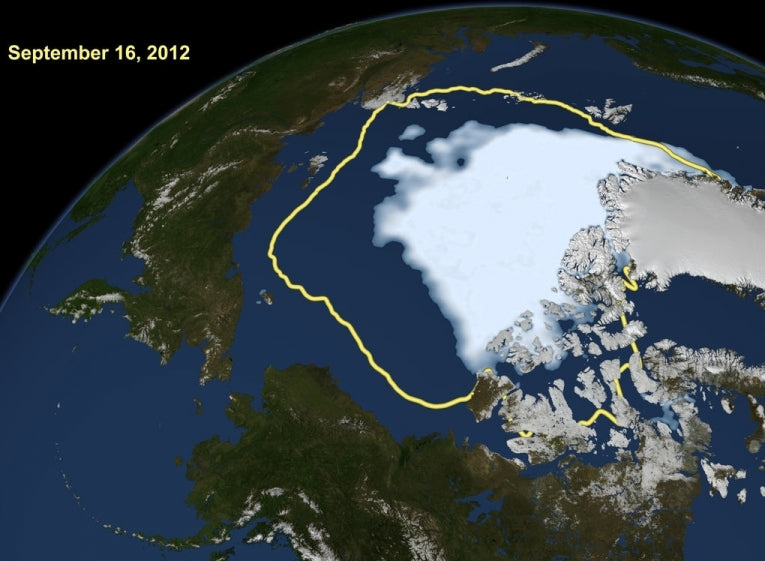The extent of the Arctic sea ice has hit a record low, the latest satellite data shows.
The frozen ice cap reached its summer minimum of 1.32 million square miles (3.41 million square kilometres) on 16 September, according to the National Snow and Ice Data Center (NSIDC).
The figure is around 300,000 square miles less than the previous lowest measured by satellite in mid-September 2007, of 1.61 million square miles (4.17 million square kilometres). The difference is bigger than the size of the American state of Texas.
The data was analysed by NASA and the NSIDC, which is based at the University of Colorado in Boulder.
Experts at NSIDC says the figures could get even worse, as although it appears the annual minimum was reached on 16 September, if the winds change direction and compact the floating ice, the sea ice could shrink even more.
The final analysis of the sea ice melt will be released after September's figures are finalised.
The extent of the sea ice increases in the Arctic winters and decreases when the sun appears in springtime. The sea ice minimum that normally occurs in September has fallen during the last 30 years as ocean and air temperatures have risen. In fact, the current extent is around half the average from 1979 until 2000 and is the first time is has measured less than 4 million square kilometres.
Climate scientist Claire Parkinson, from NASA Goddard Space Flight Center, Greenbelt, Maryland, says, "Climate models have predicted a retreat of the Arctic sea ice; but the actual retreat has proven to be much more rapid than the predictions.
"There continues to be considerable inter-annual variability in the sea ice cover, but the long-term retreat is quite apparent."
The ice is also getting thinner, according to Joey Comiso, senior scientist at NASA Goddard. "The core of the ice cap is the perennial ice, which normally survived the summer because it was so thick. But because it's been thinning year after year, it has now become vulnerable to melt."
The old ice is replaced each winter by thin seasonal ice that often melts and disappears in summer.
On 5 August, a massive cyclone began to form near the Alaska coast and moved to the middle of the Arctic Ocean, cutting up the weakened ice for days. It severed a large area of sea ice north of the Chukchi Sea, pushing it south to warmer waters where it completely melted. It also reduced vast areas of ice into separate pieces that are more likely to melt.
Claire Parkinson explains, "The storm definitely seems to have played a role in this year's unusually large retreat of the ice. But that exact same storm, had it occurred decades ago when the ice was thicker and more extensive, likely wouldn't have had as prominent an impact, because the ice wasn't as vulnerable then as it is now."
The information about the concentration of this year's sea ice was obtained using microwave instruments on Defence Meteorological Satellite Program satellites.















